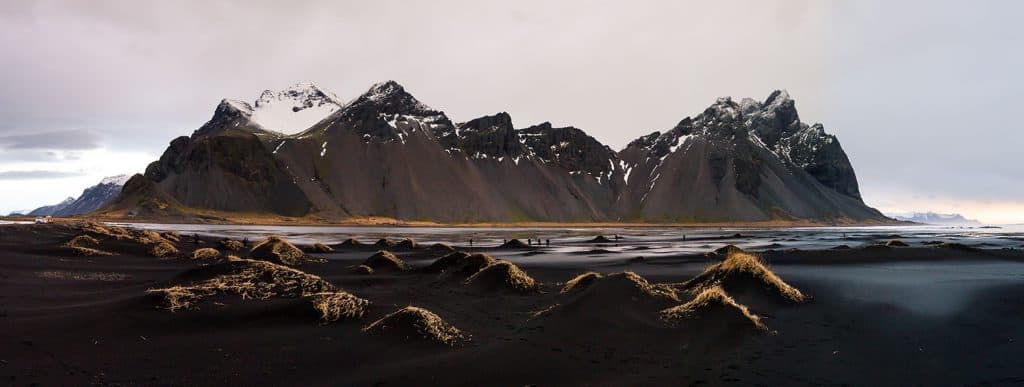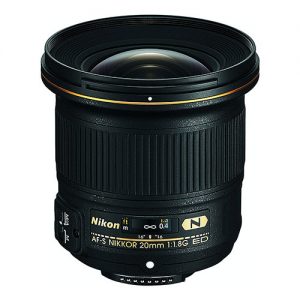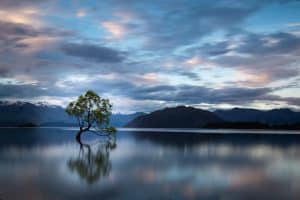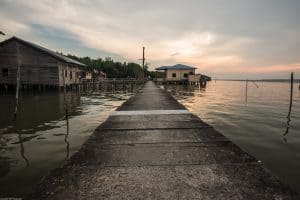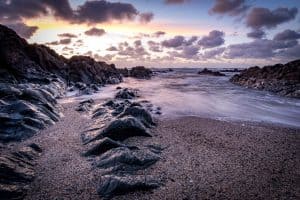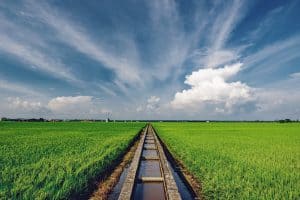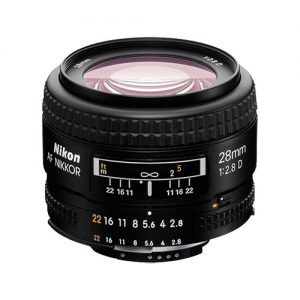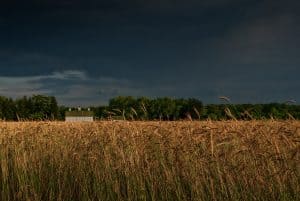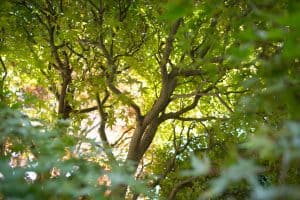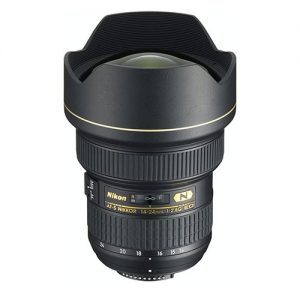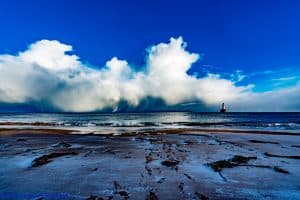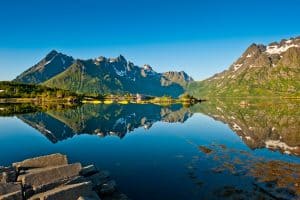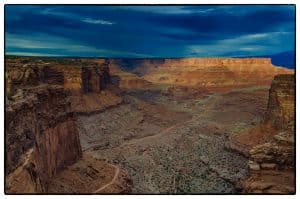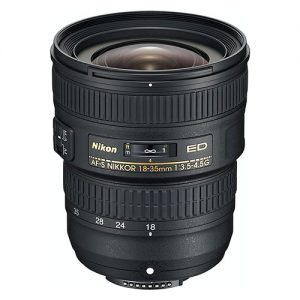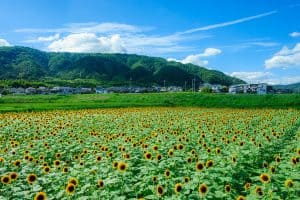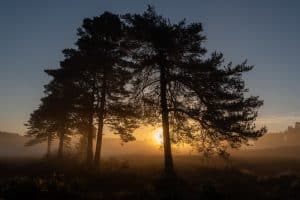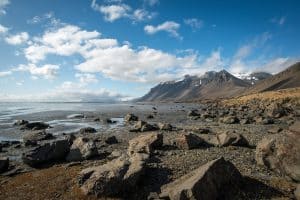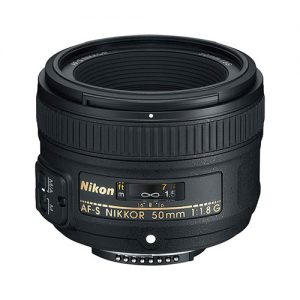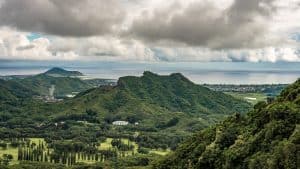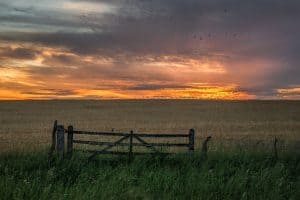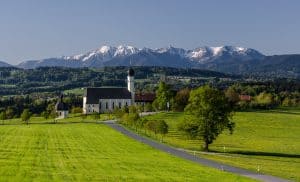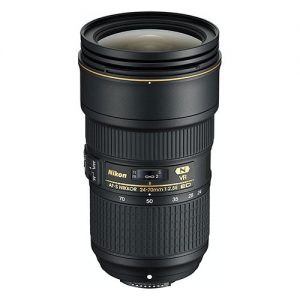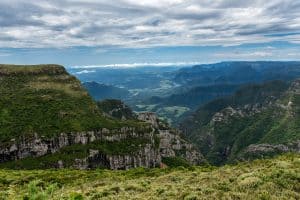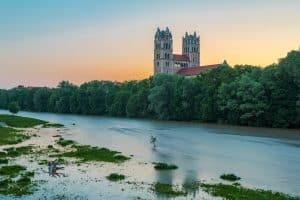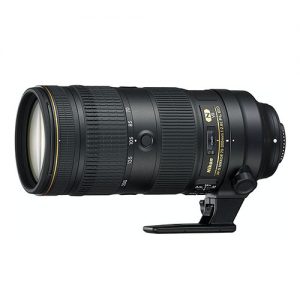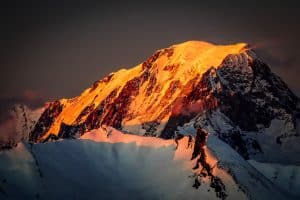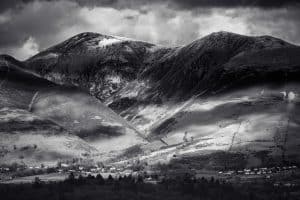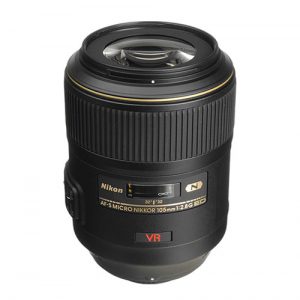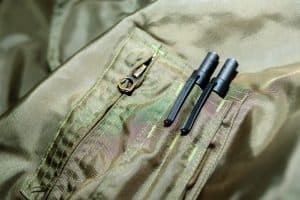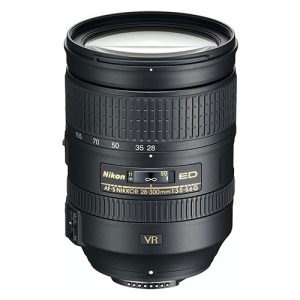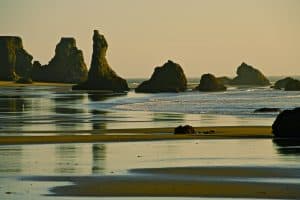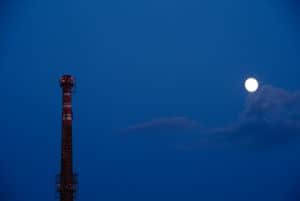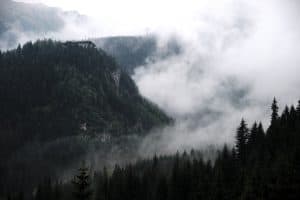There are many amazing lenses from Nikon for landscape photography. Wide angles, telephotos, and variable focal length zooms, all with superb optical qualities.
Nikon lenses have been one of the most preferred lens brands for professional and other serious photographers since before Nikon cameras were the go to film cameras for pros. Current Nikon lenses are still among the best lenses for modern digital cameras.
Generally speaking, photographers choose the lenses that will best suit their needs, so what Nikon FX lenses should you opt for if landscape photography is your primary intent?
For this discussion, I will assume you are using Nikon FX (or full frame 35mm format) digital cameras. Nikon uses the DX tag for their APS-C format camera lenses.
In this article, I’ll list my 10 favorite lenses for landscape photographers using F Mount DSLRs.
Wide Angle and Ultra Wide Angle
The first lens type that springs to mind for many of us when considering lenses for landscape photography are wide angle and ultra wide angle lenses.
For my own lens labels, I like to define wide angle as a shorter focal length than normal and ultra wide angle as a lens that has a focal length less than the short side of the image sensor size.
Not an exact term, but it works for me.
So, if normal for a Nikon FX camera is in the 40mm , 50mm, or 60mm range, wide angle would be anything shorter, such as 35mm, 28mm, or 24mm.
Lenses shorter than 24mm, the short side of 24x36mm full frame format, would fall into my ultra wide category. That would include 20mm, 17mm, 14mm, and so on. Fisheye lenses are another category altogether.
This F Mount lens qualifies as an ultra wide angle lens but the focal length has become a much more mainstream choice due to advances in lens technology which has resulted in better lenses with faster f-stops.
Horizontal field of view (FOV) of this lens is 84 degrees which is quite wide. By comparison, a 28mm lens has a FOV of 65.5 degrees, and the Nifty Fifty 50mm lens covers 39.6 degrees.
What that means for you is that a 20mm lens gives you a little more than double the view of a normal lens.
Since we tend to take in the entire scene in front of us with our naked eye, using an ultra wide angle like this is great for capturing that encompassing vista photographically.
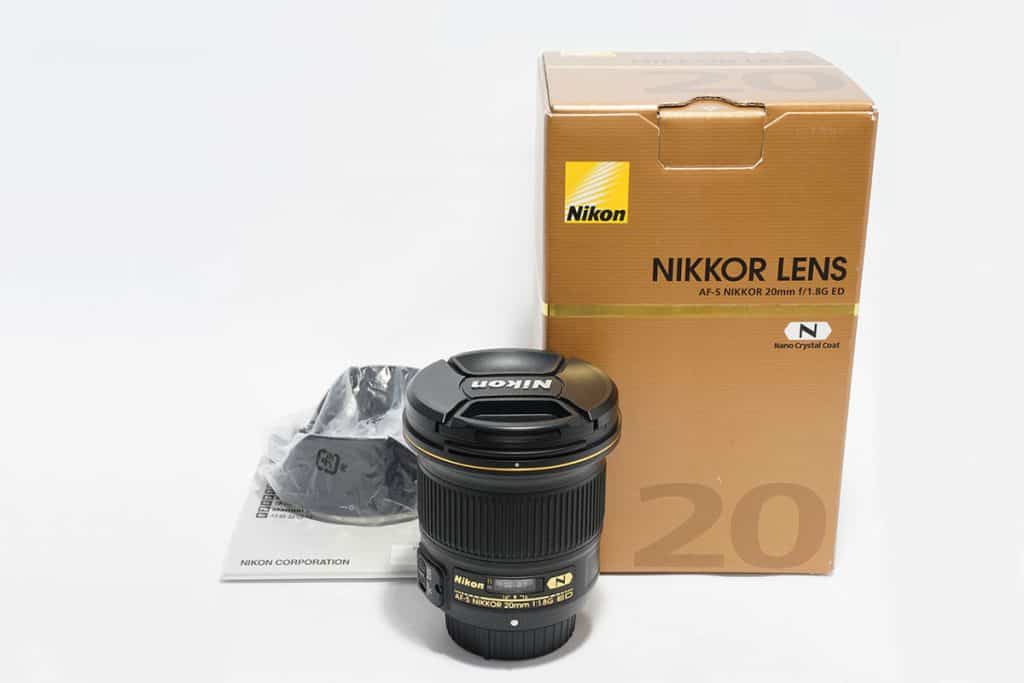
- Shot with this lens
The depth of field when used at medium distances and stopped down is very deep, meaning most objects can be rendered in focus.
Subjects that this lens covers well that way could include mountain ranges, forests, lakes, and the ocean.
Of course, you can use this any subject matter.
Non landscape uses that this lens is perfect for includes architecture and deep sky images.
The fast maximum aperture lets you use the lens in lower light levels than most ultra wide angle prime lenses or zooms including this range.
Another fantastic use for a 20mm lens is the exaggerated perspective effect when used for extreme close up views.
With the aperture stopped down sufficiently, you can have foreground objects in sharp focus while still having the background in focus.
The main issues to watch for when using extreme wide angle lenses are apparent perspective issues, especially when focusing close, and the distortion of straight lines. The Nikon 20mm is very corrected optically for distortion, but you will need to still watch for the perspective issues.
One other slight drawback is the large front filter size of 77mm.
Circular polarizers and other filters are more expensive the larger they get. Also, lens filters are more prone to cut off part of the field of view when stacked or if the filter ring is thick.
This model will autofocus on all current Nikon DSLRs by means of a built-in silent wave motor.
For many years, the 28m focal length was the go to lens for wide angle on a 35mm film SLR.
The 28m focal length offers substantially more FOV (65.5 degrees) than a normal lens without introducing a lot of the perspective or distortion issues of wider lenses.
The current F Mount 28mm f/2.8 from Nikon is still a great choice as a go to wide angle lens for users of full frame Nikon DSLRs.
A few of the positive aspects of this particular lens are its small size, light weight, and very low cost.
It costs about 1/3rd what the Nikon 20mm f/1.8 lens does while providing optical excellence on par with all of the best Nikon lenses.

- Shot with this lens
The autofocus ability of this lens is operated from the camera focusing motor, it has no motor of its own.
This may slow down how rapidly it focuses with certain older Nikon DSLRs, but the main difference with it having screw drive autofocus is the noise made the camera motor and lens gearing.
Outdoors, you probably won’t ever notice it, but that will show up in video recordings and indoors in quiet spots.
Part of what has become known as Nikon’s Holy Trinity of fast zoom lenses for FX cameras, this is a superb ultra wide to wide angle lens with excellent optical quality.
Considered a pro series lens by many because of its robust mechanical construction, it also is a favorite of many pros because of its sharpness and relative freedom from distortion.
The other two lenses in the Nikon Zoom Holy Trinity are the AF-S FX NIKKOR 24-70mm f/2.8E ED normal range zoom and AF-S NIKKOR 70-200mm f/2.8E FL ED VR telephoto zoom lenses which I will list later.
All together, these three lenses will cover almost any situation you as a photographer could find yourself in.
Purchased all at once, these lenses will also cost you about as much as a low mileage used car.
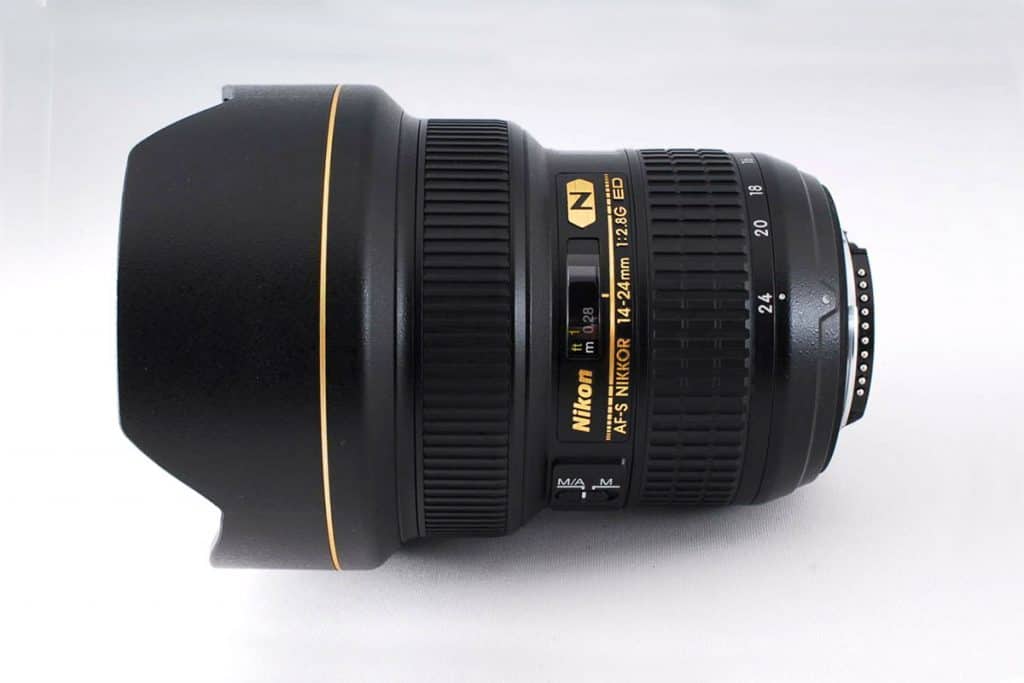
- Shot with this lens
The angle of view of this zoom lens varies from 104 degrees to 84 degrees, so at the minimum focal length, it is firmly in the realm of ultra wide angle lenses.
Despite that, and despite the fact it is a zoom, the distortion levels of this awesome lens are surprisingly low.
What this means for your landscape photography is you can change your field of view without changing your shooting position.
This opens up the opportunity for you to really be creative with the scene in front of you.
You can zoom out for an all encompassing view or zoom in to isolate smaller aspects of the overall view.
Since the maximum aperture is a fast (for a zoom lens) f/2.8, you can also change up your depth of field quite a bit. Wide open, the depth of field can be shallow.
Closed down to f/22, the depth of field when zoomed out to the 14mm end is nothing less than phenomenal, from 1 foot to infinity.
That opens up some creative opportunities for your landscape and other types of photography.
This zoom also has close focusing capability for some interesting views of the smaller natural world around you.
As a lower cost alternative to the 14-24/2.8, this lens delivers superb optical quality and decent mechanical construction.
The FOV of this zoom goes from 54.4 degrees all the way out to 90 degrees.
Another advantage of this lens having a slower maximum f-stop and a little less on the ultra wide angle side of things is that this allows the lens to be lighter in weight and have a more compact size.
Its reduced size and weight compared to similar zooms also makes this a great lens for vacations and travel, especially when paired with one of the smaller and lighter Nikon FX DSLRs such as the D750 or D780.
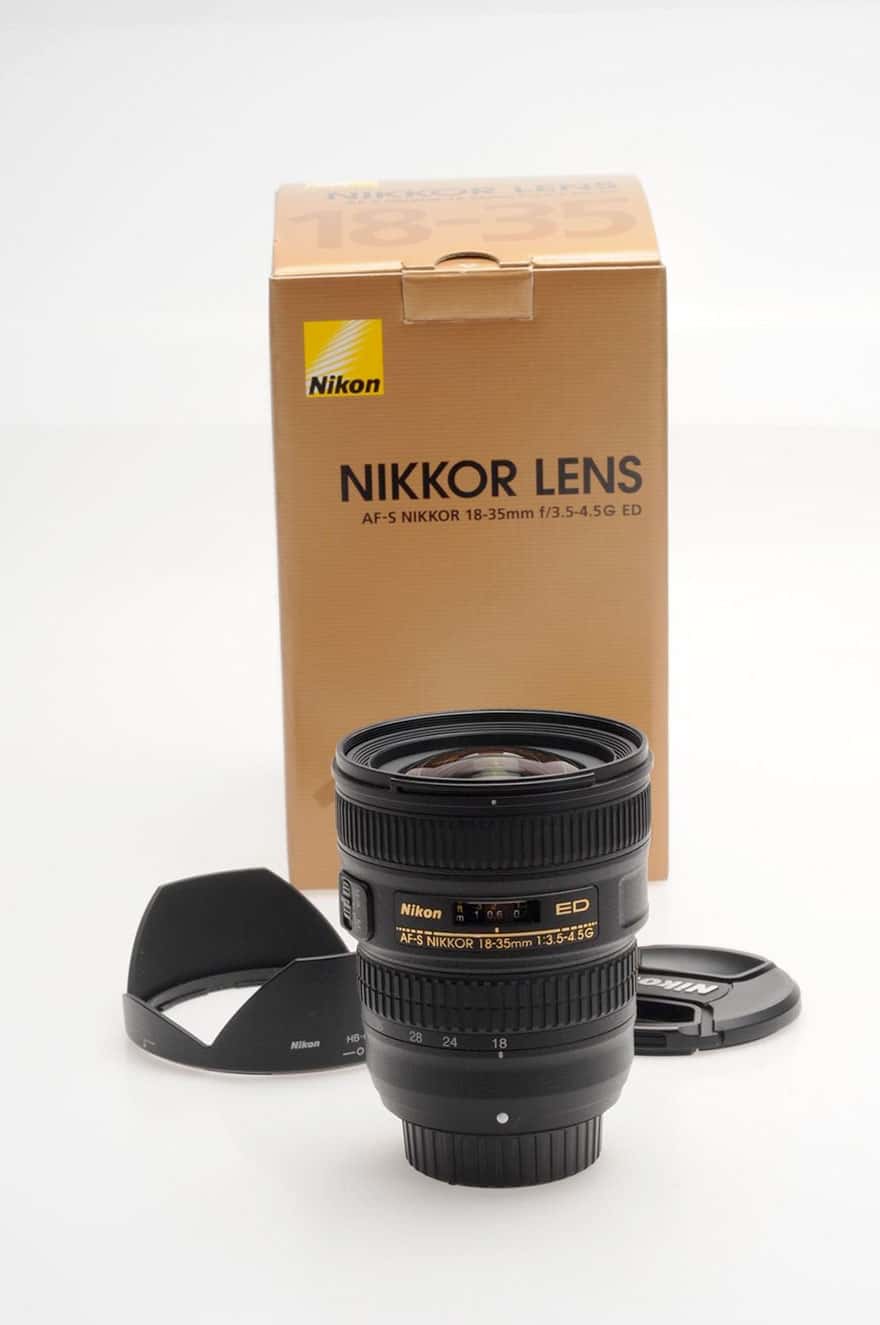
- Shot with this lens
Focus is swift and silent with its built in motor and close focus is just under one foot.
So all of the special perspective techniques are also available with this lens, despite its lower cost, smaller size, and slower maximum aperture.
Outside of that slow aperture, this may be one of the most versatile and useful ultra wide angle lenses for landscape photography.
Normal Range Focal Lengths
I’ve labeled this section as a range since “normal” is a label that can cover a variety of lenses.
According to the most accepted definition, a normal lens is a focal length equal to the diagonal measurement of the film or sensor format.
For full frame 35mm, that focal length is 43.6mm.
The common 50mm lens, our Nifty Fifty, is often a rather simple optical formula. This results in lower costs and smaller, lighter lenses with absolutely superb sharpness and other optical characteristics.
Just take a look at a 50mm f/1.4 lens compared to any other focal length fast lenses.
The other lenses, wide angle or telephoto, are very large, heavy, and expensive compared to our fave fifty mil.
I like to include the zoom lenses that incorporate 50mm in their range as also being so-called “normal” lenses. So, a 35-105mm, 28-85mm, or 24-70mm zoom lens is, by my definition, normal range zooms.
You might say this is a sleeper of a lens. It’s a basic lens, normal focal length, normal perspective, compact, very light, inexpensive.
Yet it’s one of the best lenses for overall optical quality in the entire Nikon and Nikkor lens lineup.
First introduced in 1978, it replaced the 50mm (5cm) f/2.0 originally introduced in 1946.
Every new version and intermittent upgrade improved this already fantastic lens.
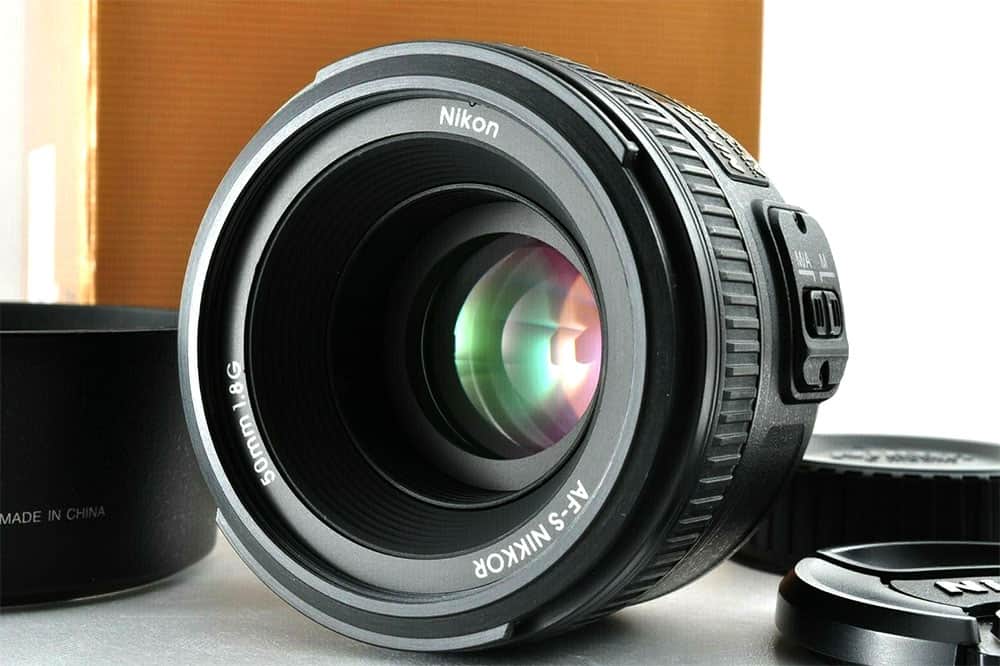
- Shot with this lens
Let’s talk about pricing first. The 50mm f/1.8 lens costs close to some of the memory cards I’ve tested lately such as the CFExpress cards and Nikon’s own XQD cards.
Same story holds true with most brand’s basic Nifty Fifty. The Z Mount 50mm lens is quite a bit more expensive and is a completely different design.
As I said, it’s extremely sharp. Other optical qualities include very low distortion, excellent edge to edge consistency, relatively close focusing, and beautiful bokeh (out of focus highlights).
At f/1.8, it doesn’t have the glamour factor of faster lenses such as the Nikon 50mm f/1.4 or the discontinued 58mm f/1.2 Noct-Nikkor, or the brand new Z Mount 58mm f/0.95 lenses but f/1.8 is really quite fast for most of our needs as a landscape photography lens.
At f/1.8, we can employ selective techniques to isolate certain subject elements in our landscape scenes.
Another good use for this lens is environmental portraiture in the great outdoors.
Though 24mm is a fairly significant wide angle, I call this a normal range zoom lens for the obvious reasons that it has normal within its range and it covers most of what could be considered as a lens for regular situations we photographers find ourselves in.
It’s a truly professional level lens. Mechanically it’s very rugged and heavy duty, optically it’s super sharp and has low distortion, and it has a very fast (for a zoom lens) maximum aperture of f/2.8.
It also focuses very close, making it a great choice for that one lens we could keep on the camera for most of our images, including our landscape photography.
It is rather expensive, somewhat large, and heavy for its size. It also has a large front filter size of 77mm. It’s the middle lens in the so-called Holy Trinity of Nikon FX pro series lenses.
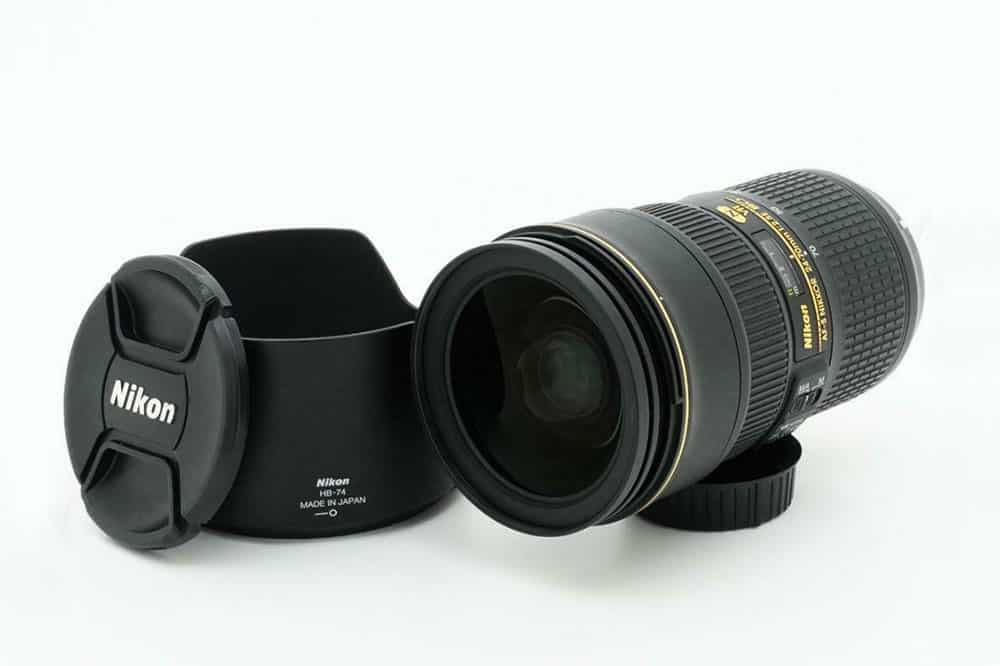
Telephoto Lenses
When considering landscape photography, some photographers tend to leave out telephotos and telephoto zooms.
But a telephoto lens can be very useful as a landscape photography lens fi you use it to isolate parts of the scene. A telephoto lens can isolate by its narrow FOV and by the limited depth of field you can get.
I like telephoto lenses in nature photography for these reasons and for the added benefit of capturing close up views of nature.
Another extra plus is that you are also in a good position to capture wildlife photos.
The third lens of Nikon’s triple threat of pro quality f/2.8 zooms for full frame digital cameras, this is the newest version of it.
And this is the best version by far due to improvements in its already stellar performance and features.
A large lens compared to the other lenses in this list, it is also rather heavy.
Nikon has actually reduced the weight of this zoom compared to previous version by using improved glass and some redesign of the mechanics of the lens.
Super rugged, it lives up to the requirements of professional and other advanced users.
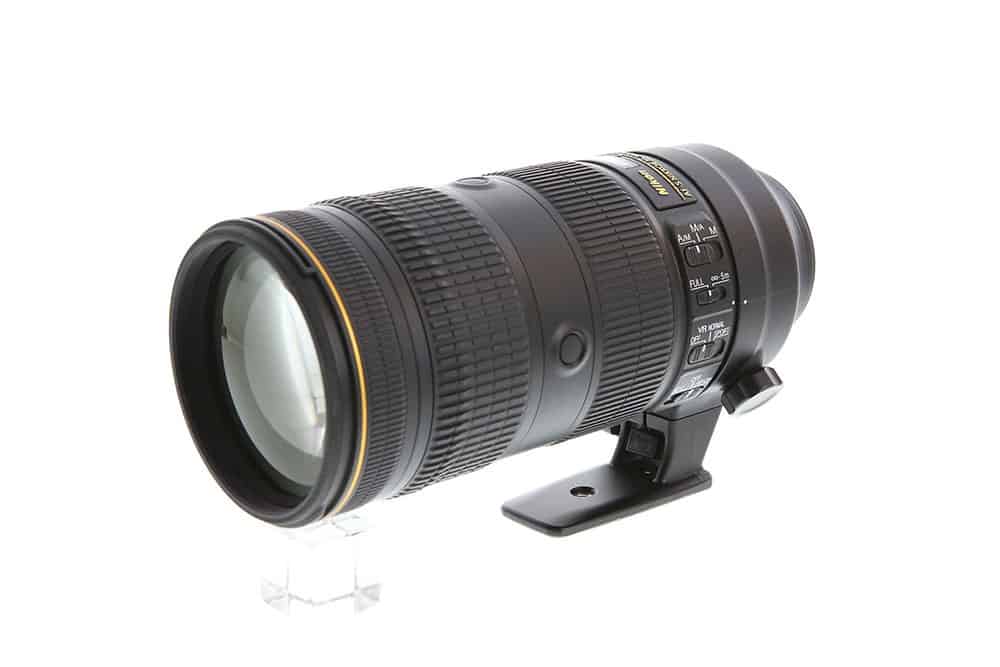
- Shot with this lens
Since it is kind of heavy, Nikon has thoughtfully added a tripod collar to the lens barrel.
The collar is permanently mounted but the tripod mounting foot can be removed to keep it out of the way for hand holding the lens.
Field of view with this zoom is from 28.8 degrees at 70mm to 10.3 degrees at the 200mm focal length.
Combined with the f/2.8 maximum aperture, you can single out a small part of the landscape scene in front of you.
With its large maximum aperture and 4X power (over normal) telephoto combined with the optimized VR vibration reduction or image stabilization, you can use this lens handheld for action images of wildlife or any action subject you find in front of your camera.
Just like their other high end lenses, this lens is not at all cheap. It costs about as much as several of Nikon’s FX cameras, but for those requiring the features and quality it has, the price is worth it.
One of my favorite lenses for all types of photography is this short telephoto macro lens.
Based on the previously manufactured 105/2.5 Nikkor for film cameras made from 1959 to 2005, this is a fabulously sharp lens with excellent bokeh.
Our newest version of this focal length from Nikon is this specially corrected for ultra close focus use macro, or Nikon likes to call it Micro, short telephoto.
It is a completely new lens, by the way, not merely a redesign for closer focusing.
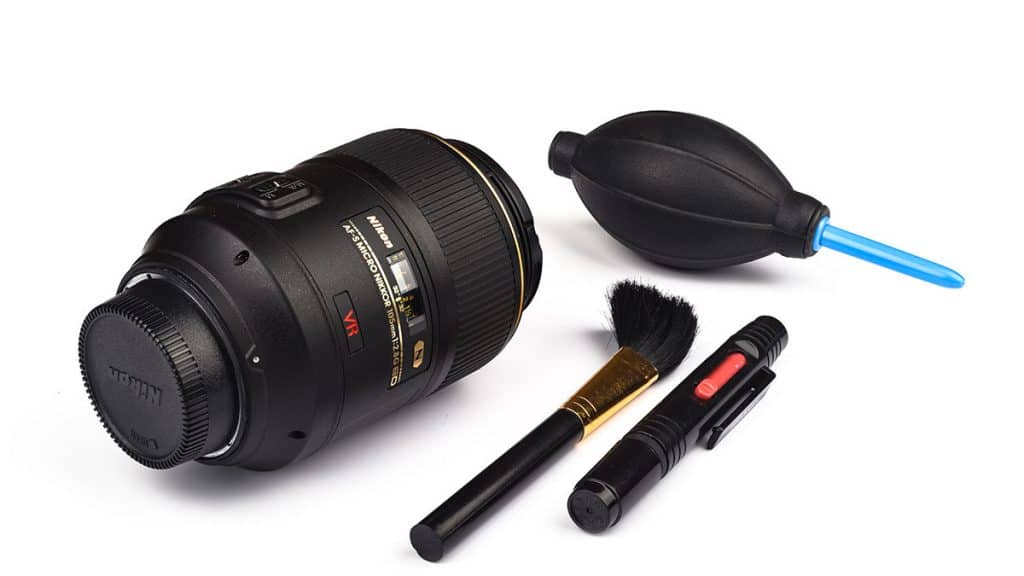
- Shot with this lens
Field of view of a 105mm lens is 19.5 degrees, making it a good lens to isolate a limited portion of our landscape scenes.
Since it;s also a macro lens, I can use it for those very interesting small nature subjects I run across when I’m outdoors for my general landscape photography.
Additionally, 105mm is an awesome focal length for portraits.
Great perspective, narrow FOV, and beautiful bokeh. It’s attractively priced as well.
If I had to choose only one lens to take on a cruise, nature walk, or other vacation trek, I would probably opt for this fantastic all-in-one zoom lens for full frame DSLRs.
With a FOV rangin from 65.5 degrees at 28mm to 6.9 degrees at the 300mm focal length, you can capture just about any kind of image you might desire.
On the negative side of things, this lens is huge, heavy, and has a slow and variable maximum aperture.
On the plus side, this lens replaces three or four lenses in my bag that I can leave at home while on my vacation.
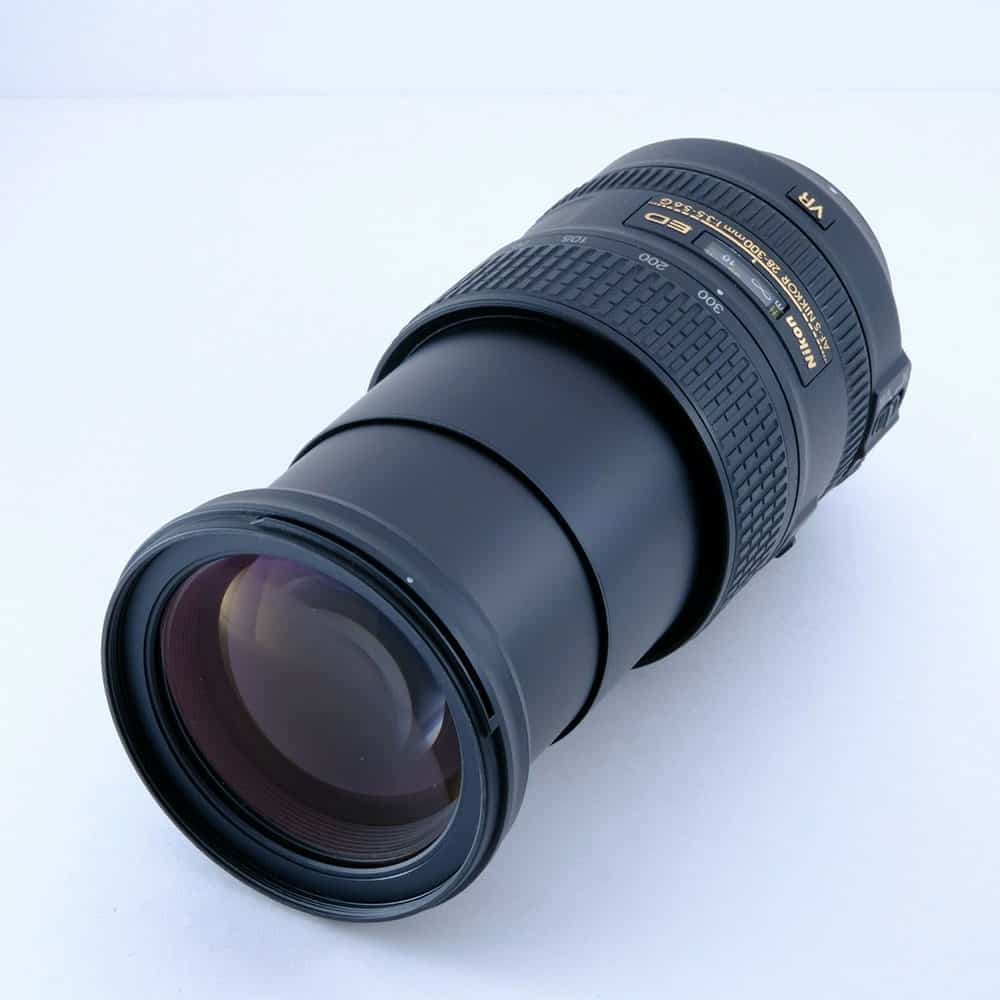
- Shot with this lens
Distortion, color fringing, sharpness issues, and corner light fall off are common issues with some cheaper all-in-one lenses, but those aren’t problems this lens has.
Seriously, within the limitations I already mentioned, this lens is surprisingly good.
Runner Up Lenses
I tend to have a hard time narrowing down any list of photographic gear, because I really like so many things made by my favorite brands.
Hey, I even like many items made by companies new to me.
Since I have that personal issue, let me add to this list several lenses I considered adding to this list but didn’t so you could actually finish reading this in one sitting.
For F Mount, I also like the AF-S FISHEYE NIKKOR 8-15mm f/3.5-4.5E ED, a fisheye lens for extremely wide angle views, albeit with distortion, and for stitching spherical panoramas.
The AF-S FX NIKKOR 24-120mm f/4G ED which is often included as a lower cost kit lens with excellent sharpness.
And the AF-S DX Micro NIKKOR 85mm f/3.5G ED, a smaller, lighter, slightly less expensive macro lens short telephoto which does double duty as a portrait lens.
FAQs for Landscape Photography Lenses
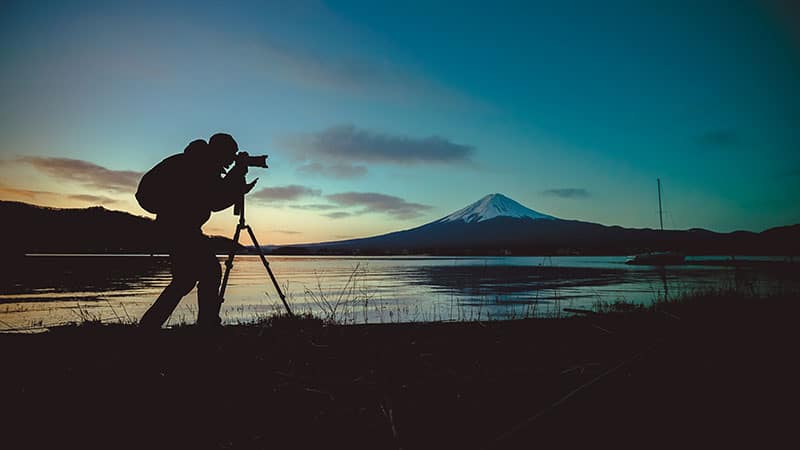
Do I need a wide angle lens for landscapes?
A wide angle lens is often a good choice for landscape photography due to the large field of view and deep depth of field.
But you can make excellent landscape pictures with a Nifty Fifty normal lens, too, even with telephoto lenses.
Are zooms not sharp enough for landscapes?
Short answer, depends. Longer answer, some zoom lenses are such good performers that they beat older prime lenses and are extremely versatile for use in a wide variety of applications.
Can I use a kit lens for landscape photography?
Absolutely! Many kit lenses have amazing sharp optics and are small and light enough to take just about anywhere. What makes kit lenses less expensive is usually having a slower maximum aperture and not being super rugged mechanically.
Should I use filters for my landscape photography lenses?
You certainly can. Whether you should or not is completely up to you.
I like to have either a high quality UV filter or a rigid lens hood on my expensive lenses.
Beside the photographic benefits of these accessories, they also protect the lens.
Some photographers opt for no protection filters and that’s a valid option, too.
Other filters that are great for digital landscape photography are circular polarizers (CPL), neutral density (ND), and graduated neutral density (GND) filters.
Several manufacturers make filter holders that you can adapt to your different lenses and use the same high quality CPL, ND, and GND filters on each one.
Final Words
To sum up my choices, many photographers, myself included, tend to automatically gravitate to high quality wide angle and super wide angle lenses for landscape photography.
It’s a valid option for many landscape scenes.
But we don’t want to neglect opportunities to heighten our creativity by employing other lenses, such as macro lenses, telephotos, or variable focal length zoom lenses.
Show us your favorite landscape images and tell us your thoughts of what you consider to be the best Nikon full frame lenses for landscape photography.

